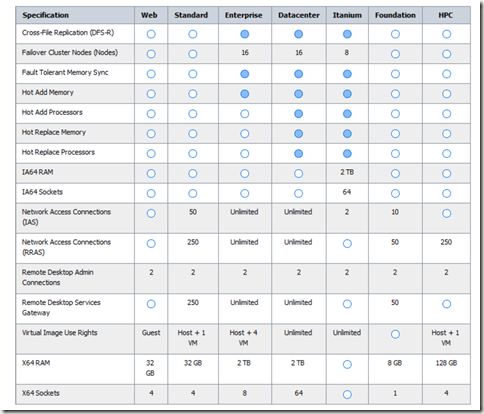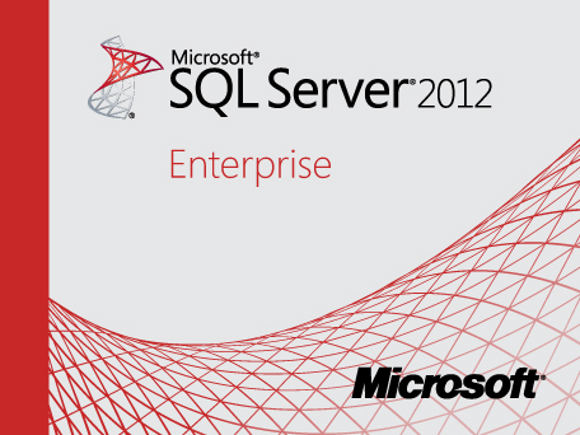

- #SQL SERVER 2012 ENTERPRISE EDITION VS STANDARD EDITION HOW TO#
- #SQL SERVER 2012 ENTERPRISE EDITION VS STANDARD EDITION INSTALL#
- #SQL SERVER 2012 ENTERPRISE EDITION VS STANDARD EDITION UPGRADE#
- #SQL SERVER 2012 ENTERPRISE EDITION VS STANDARD EDITION FULL#
Yogi has in depth AWS knowledge and expertise in running Microsoft workload on AWS.You can move or copy a database from Enterprise Edition (or Developer Edition, which supports more or less the same feature set) to Standard Edition. Yogi Barot is Microsoft Specialist Senior Solution Architect at AWS, she has 22 years of experience working with different Microsoft technologies, her specialty is in SQL Server and different database technologies. To learn more about most effective way of working with Amazon RDS for SQL Server, see Best practices for working with SQL Server. Upgrading to Enterprise Edition allows you to take advantage of higher memory and the edition’s high-availability features.

#SQL SERVER 2012 ENTERPRISE EDITION VS STANDARD EDITION HOW TO#
In this post, I showed how to modify Amazon RDS for SQL Server from Standard Edition to Enterprise Edition using the snapshot restore method.

#SQL SERVER 2012 ENTERPRISE EDITION VS STANDARD EDITION UPGRADE#
Upgrade your RDS for SQL Server instance via the AWS CLI The following screenshot shows the new RDS for SQL Server database created from the snapshot, with all databases, objects, users, permissions, passwords, and other RDS for SQL Server parameters, options, and settings restored with the snapshot. After the database is restored, verify the version of SQL Server.For DB instance identifier, enter a name for your new instance.Under DB specifications, choose the new edition of SQL Server (for this post, SQL Server Enterprise Edition).Select the snapshot and on the Actions menu, choose Restore snapshot.On the Snapshots page, verify that snapshot is created successfully and check that the status is Available.Select your database and on the Actions menu, choose Take snapshot.On the Amazon RDS console, choose Databases.You can check your version of RDS for SQL Server on the SQL Server Management Studio. We take a snapshot of the existing RDS for SQL Server instance and then restore it as a different edition of SQL Server. We first walk you through modifying your RDS for SQL Server edition via the console. Upgrade your RDS for SQL Server instance on the console Verify the RDS for SQL Server Enterprise Edition instance.Restore the snapshot as an RDS for SQL Server Enterprise Edition instance.Take a snapshot of the existing RDS for SQL Server Standard Edition instance.The upgrade process includes the following high-level steps: With Enterprise Edition, you have all the features with no limitation of CPU and memory. Enterprise: This is the most complete edition to use with your mission-critical workloads.Additionally, Standard Edition has a limitation of 24 cores and 128 GB of memory. Standard – This edition enables database management with minimal IT resources, with limited feature offerings, a lack of some high-availability features, and few online DDL operations compared to Enterprise Edition.For this post, we discuss the following editions:
#SQL SERVER 2012 ENTERPRISE EDITION VS STANDARD EDITION FULL#
For the full list, see Microsoft SQL Server versions on Amazon RDS. Prerequisitesīefore you get started, make sure you have the following prerequisites:Īmazon RDS supports DB instances running several versions and editions of SQL Server. This post walks you through that process. To do so, you need to upgrade your existing RDS for SQL Server instance from Standard Edition to Enterprise Edition. Many of our customers want to change from the Standard Edition of Amazon Relational Database Service (Amazon RDS) for SQL Server to Enterprise Edition to utilize its higher memory and high-availability features.
#SQL SERVER 2012 ENTERPRISE EDITION VS STANDARD EDITION INSTALL#
The edition that you install also depends on your specific requirements. Microsoft SQL Server is available in various editions, and each edition brings unique features, performance, and pricing options.


 0 kommentar(er)
0 kommentar(er)
